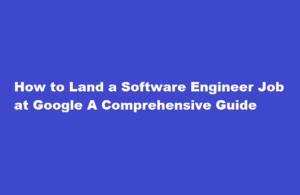Simplifying Maven Builds How to Exclude Dependencies
3 min read
Introduction
Maven is a powerful build automation tool widely used in Java projects for managing dependencies. However, at times, including unnecessary dependencies can bloat your project and lead to conflicts or performance issues. To address this concern, Maven provides a simple mechanism to exclude specific dependencies. In this article, we will explore how to exclude dependencies effectively, thereby streamlining your build process and ensuring a leaner and more efficient project.
Understanding Dependency Exclusion
In Maven, dependencies are managed through the Project Object Model (POM) file, which specifies project information and its dependencies. Maven resolves dependencies transitively, meaning it includes any indirect dependencies required by the direct dependencies. However, in certain scenarios, we may need to exclude specific dependencies to eliminate conflicts, version mismatches, or unwanted bloat.
Exclusion Syntax
To exclude a dependency from being included in the build, you need to add the exclusion configuration to the relevant dependency declaration in your POM file. The exclusion configuration follows a specific syntax, using the <exclusions> element within the dependency declaration. Inside <exclusions>, you define one or more <exclusion> elements specifying the groupId and artifactId of the dependency to be excluded.
Excluding Transitive Dependencies
Maven’s transitive dependency management can automatically bring in indirect dependencies. However, sometimes these transitive dependencies may cause conflicts or are not required for your project. To exclude transitive dependencies, identify the dependency tree using the mvn dependency:tree command. Then, locate the unwanted dependencies and add the corresponding <exclusion> elements to the appropriate dependency declarations in your POM file.
Excluding Specific Versions
In some cases, you may want to exclude a specific version of a dependency due to compatibility issues or to ensure consistency across your project. Maven allows you to exclude specific versions by specifying the desired version in the <exclusion> element. This ensures that only the intended version of the dependency is excluded while other versions are still resolved.
Plugin Dependency Exclusion
Apart from regular project dependencies, Maven also manages plugin dependencies. Similar to regular dependencies, you can exclude specific plugin dependencies using the <exclusions> element within the plugin declaration. This allows you to control which plugins are used and avoid any unnecessary plugin conflicts.
Testing Exclusions
To validate that the exclusions are correctly configured, it is essential to run your project’s tests after making changes to the POM file. Running tests ensures that the excluded dependencies do not break any functionality and that your project still functions as expected.
FREQUENTLY ASKED QUESTIONS
What is exclusion in Maven dependency?
Exclusions are set on a specific dependency in your POM, and are targeted at a specific groupId and artifactId. When you build your project, that artifact will not be added to your project’s classpath by way of the dependency in which the exclusion was declared.
What are the different types of dependencies in Maven?
There are two types of dependencies in Maven: direct and transitive. Direct dependencies are the ones that we explicitly include in the project. On the other hand, transitive dependencies are required by direct dependencies. Maven automatically includes required transitive dependencies in our project.
Conclusion
Maven’s dependency exclusion feature provides a straightforward way to manage and streamline your project’s dependencies. By excluding unnecessary or conflicting dependencies, you can achieve a leaner and more efficient build process. Remember to utilize the exclusion syntax correctly and test your project thoroughly to ensure that the exclusions do not introduce any unintended issues. By effectively excluding dependencies, you can maintain a clean and well-organized project that optimizes performance and avoids unnecessary complexities.
Read Also : Excluding Null Values in SQL A Comprehensive Guide





